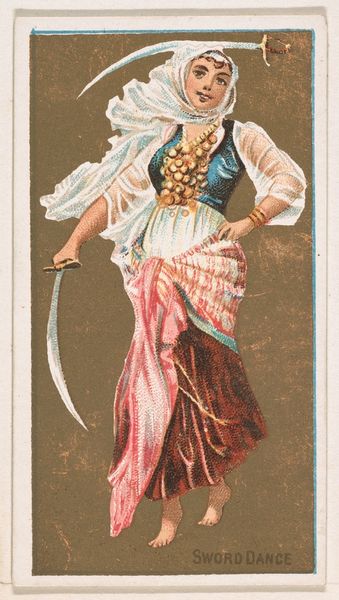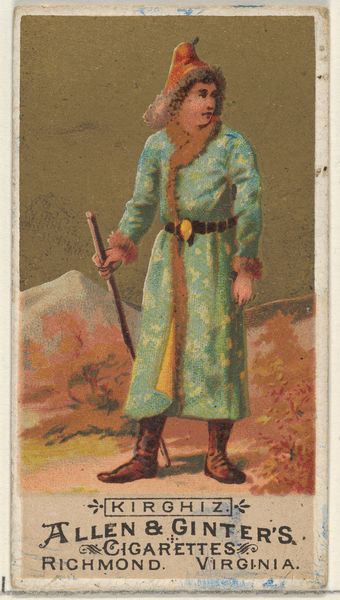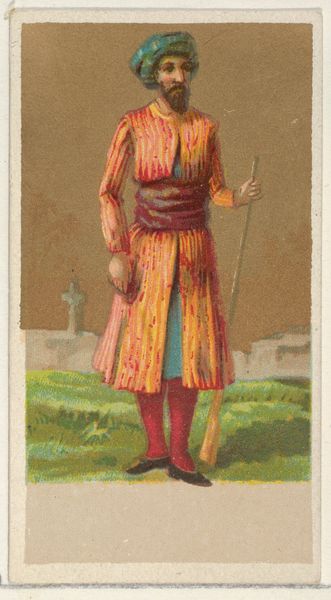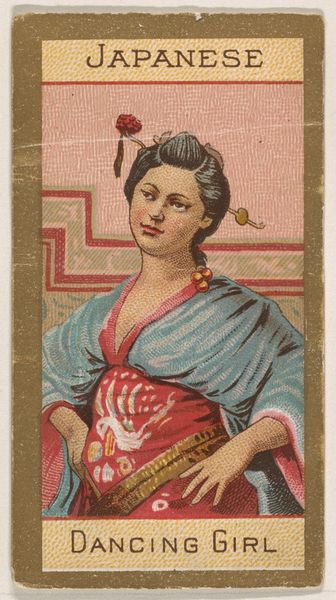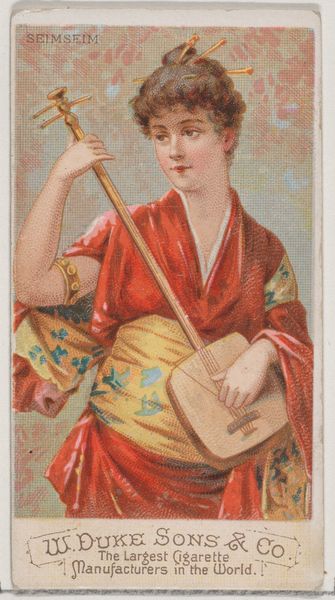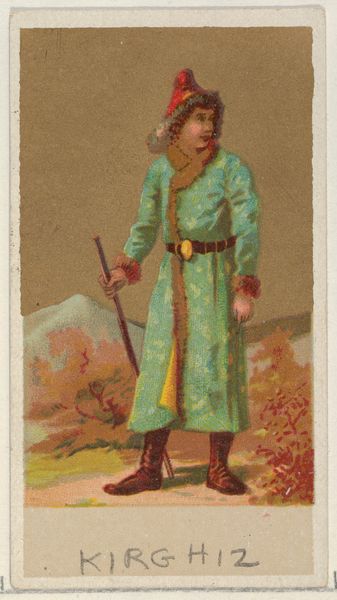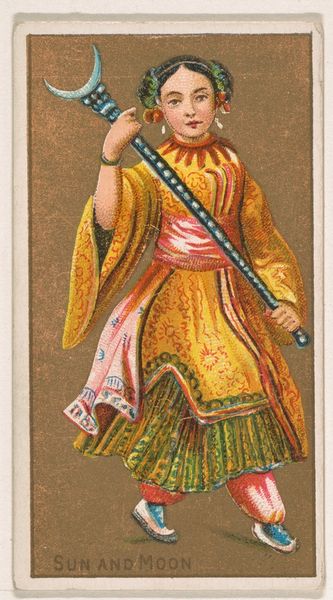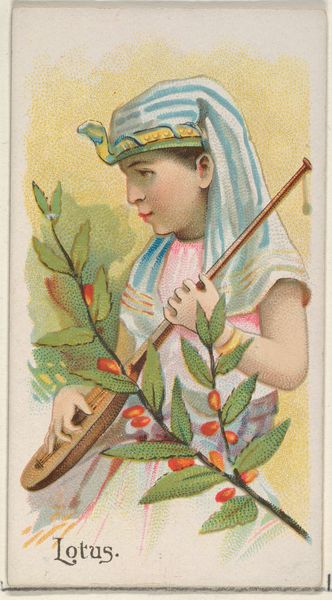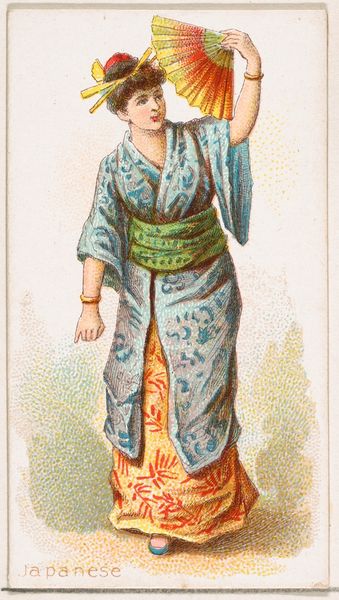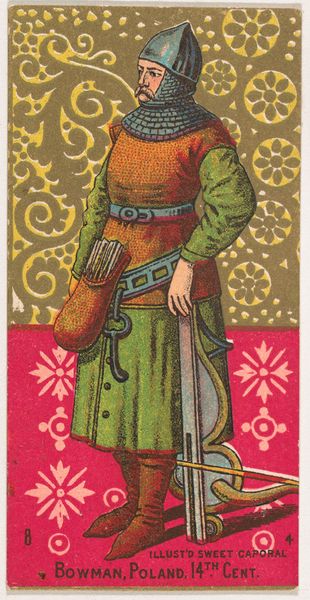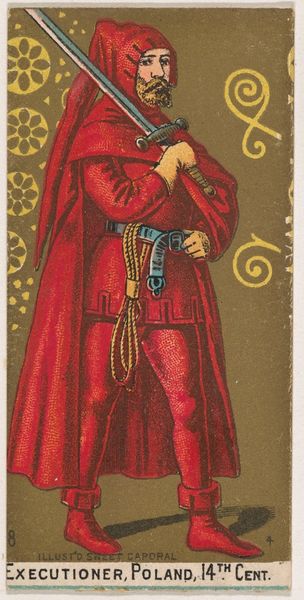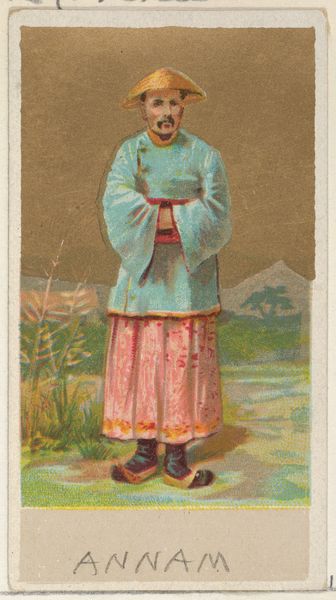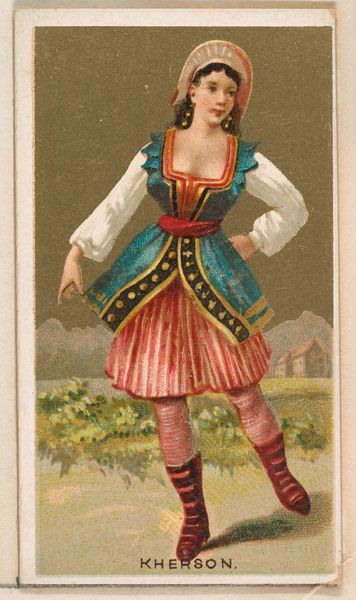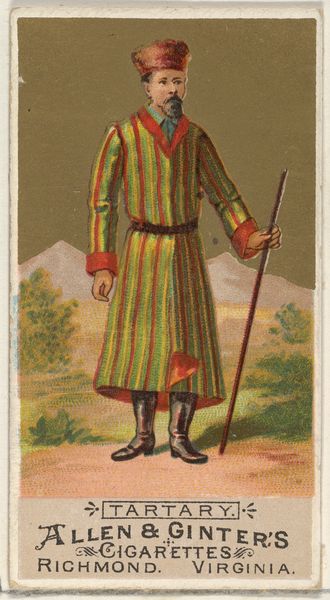
Malay Creese, from the Arms of All Nations series (N3) for Allen & Ginter Cigarettes Brands 1887
0:00
0:00
drawing, coloured-pencil, print
#
portrait
#
drawing
#
coloured-pencil
# print
#
caricature
#
coloured pencil
#
orientalism
Dimensions: Sheet: 2 3/4 x 1 1/2 in. (7 x 3.8 cm)
Copyright: Public Domain
Art Historian: Here we have an interesting piece titled "Malay Creese, from the Arms of All Nations series," created in 1887 by Allen & Ginter. It's currently held at the Metropolitan Museum of Art. Curator: My initial reaction is drawn to the image’s exotic vibrancy, though somewhat muted; the layering of color and linear designs creates a sense of depth and complexity. What catches my eye immediately is the pronounced asymmetry of the creese itself, with its serpentine blade contrasting sharply against the figure’s comparatively still pose. Art Historian: Exactly. The creese, or keris, isn’t just a weapon. It’s a powerful cultural symbol in Malay society, embodying spiritual power and identity. Its wavy form alludes to a mythical serpent and represents strength, protection, and ancestral connection. This imagery in the series aimed to imbue their brand with a sense of global awareness and exoticism. Curator: From a structural perspective, the figure dominates the composition, nearly filling the entire frame, and is further accented by what appears to be colored pencil, which gives the work a rich texture and softens its overall effect. What’s fascinating is how Allen & Ginter balances flat decorative patterns with the slight attempt at naturalistic shading in the figure’s face and clothing. The brand wanted to project the feeling of the place instead of an actual place Art Historian: True. These trade cards served as windows into different cultures, although often filtered through a Western gaze. Notice how details of clothing—the batik patterns on the sarong—evoke a sense of place, hinting at trade routes and cultural exchanges of that era. The accessories, such as the bracelets and earrings, become signifiers of status. The light colors bring a serene look, with a dangerous feel because of the creese. Curator: It’s interesting how they flattened a very detailed idea into an idealized scene, giving it this strange sense of placelessness, which can easily be read in the sky with very few details. This placelessness is contrasted with this powerful weapon as a memento or icon of strength, rather than something to be wary of, due to the setting that removes all threat of harm. Art Historian: Reflecting on the work, I’m struck by the layers of cultural projection and symbolism interwoven into such a small format. It underscores the impact images have in shaping our understanding of diverse societies. Curator: Indeed. It's a captivating example of how design and material choices construct meaning, revealing much about not just the depicted culture, but also the tastes and ambitions of its producers and their intended market.
Comments
No comments
Be the first to comment and join the conversation on the ultimate creative platform.
